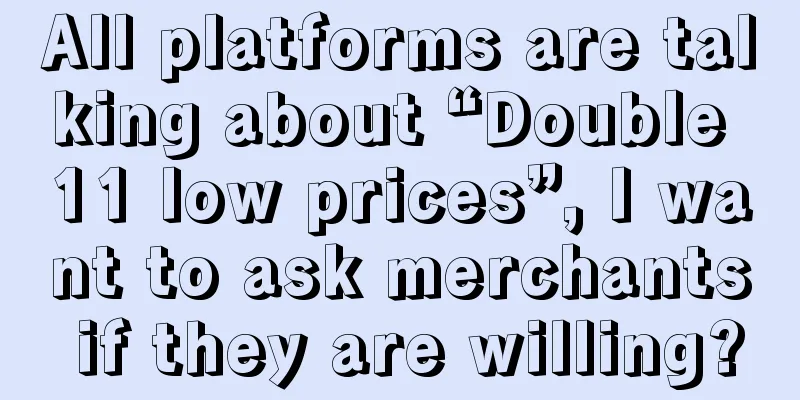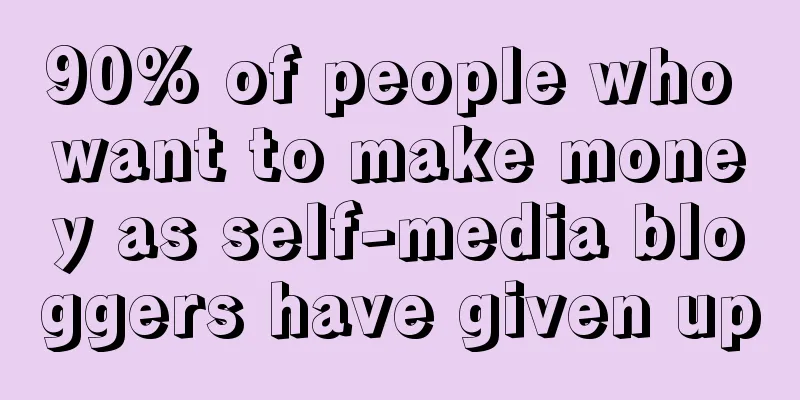The insider information of a bar brand partner is absolutely true...

After National Day, we hear the news of “consumption recovery” everywhere. So I made a special appointment for an interview with C, a partner of a chain bar brand close to me. He personally told me the real situation, evolution trends and opportunities of catering bars and offline retail. My buddy is very direct and speaks in plain language, which is absolutely true. I asked a lot of questions, and I picked out some of them to share with you. If you find it useful, please like and share~~ enjoy: 1. Peak and off-peak seasons and consumption habits of the bar industryYan Tao: Is there a clear difference between the off-season and peak season in the bar industry? C: The sales of the bar industry are related to weather temperature, consumption scenarios and consumer mentality. For example, in Shanghai, the peak sales season is from autumn to winter and from spring to summer, because the weather during this period is suitable for going out for consumption; the weather is worse in the middle of summer and the worst around the New Year; in addition, during the New Year, people are anxious to go home and have to save money for the New Year, so their desire to consume is low. At the same time, at the end of the year, everyone is rushing home and has little desire to relieve stress. Our store has a significant decrease in customer flow during the New Year, which is a good example. Yan Tao: Compared with the same period last year, has your overall revenue changed this year? C: The overall revenue has increased slightly, but it is negligible. From the perspective of consumption structure, the epidemic has not caused a major change in the consumption of mass bars. The general direction of consumption habits remains unchanged, only the details are adjusted. Taking consumers' dining habits as an example, people who are used to dining out will not change their habits due to the epidemic, but the amount of consumption may be slightly adjusted. The comparison of our bar's operating data last year and this year shows that the overall consumption status is similar, and last year can be used as a standard model year for small bars. Yan Tao: Do consumers nowadays pay more attention to cost-effectiveness? C: They definitely value cost-effectiveness more, or even pursue cheapness. The overall consumption logic now tends to be to get more things for the same amount of money. Consumers are not very sensitive to quality (not so concerned about quality), especially non-practitioners who are more sensitive to the price of wine. For example, people who don't drink often will feel that expensive wine can't be sold. Of course, special wines such as Moutai are an exception, because Moutai itself has banquet wine attributes and value-added attributes, and there are dealers who hoard goods, so it cannot be simply regarded as ordinary wine. Yan Tao: Are there any changes in the consumption habits of people who drink bottled wine? C: There is little change in the young consumers of bottled wine (wine without packaging, directly presented in simple packaging such as glass bottles or plastic bottles), but there is a significant change in the population over 35 years old. This is because for young people, they are not completely independent financially when they start working at around 25 years old, and their consumption is not greatly affected by family subsidies; the consumption income and disposable income of people who marry and have children later before the age of 35 are relatively stable. People over 35, such as the pseudo-middle class in large factories, used to have strong spending power, but now they are starting to save money and reduce spending due to layoffs and economic pressure. Because it is difficult to find a job, many people even choose to join a business. Many people who come from large factories are keen to join projects with a cost of 500,000 to 1 million yuan, which also reflects this trend. In addition, the consumption trend of red wine has also changed greatly, from high-priced imported products to low-priced daily consumer goods. It used to cost hundreds of yuan, but now it costs dozens of yuan. A 750ml bottle of wine over a hundred yuan is very affordable, reflecting the change in consumption habits. People no longer simply pursue high quality. This also indirectly proves the changing trend of consumption habits (more emphasis on cost-effectiveness). 2. Changes in economic trends in bar operationsYan Tao: What changes in economic trends have you discovered from the operation of your bar? C: The worse the economy is, the better the sales of bars like ours are, because consumers pay more attention to cost-effectiveness when they have no money. When the economic situation is bad, the sales of low-priced drinks in our bar are high. But the trend is quite clear. In the past, the stock market was large enough, and even pigs could fly for a while in the wind. Now many catering brands that originally wanted to operate their own businesses have started to franchise this year. Some people's mentality has collapsed and they don't have long-termism; some people now want to get as much as possible. Moreover, the hot money in the market is almost gone. After two years of VC investment in the Internet, VC has begun to enter the real economy. The overall trend is that some people are moving towards the real economy, but it is not because the economy is bad, but because the cost of the Internet is too high. Yan Tao: Do you think there are any differences between offline business and Internet business? C: Offline business is slower and more invisible; online business is full of data, so it is easier to find the problem. For example, there was a period of time when the sales of one of our stores were very low, and we couldn't see the reason. Later, we found that the clerks secretly stopped selling cocktails after 12 o'clock. When we asked about it, the clerks said that fewer people ordered cocktails recently, probably because they were not good and the taste had changed. As a result, we went to study new cocktail products, but the data was still so low. Finally, we went to the store and found that they stopped selling cocktails after 12 o'clock because the employees found it troublesome. There is a very important point in offline work, which is to practice basic skills, which is your ability to control from beginning to end. When I first took charge of offline work, I felt very uncomfortable. I felt that I was a brain, but I was paralyzed and couldn't use my strength in various ways. When I was online, several people were gathered in an office and the work could be completed quickly; offline work was different. After a week of modification, there was no effect and the data could not be recovered, so I also spent a long time grinding. In addition, live streaming is a bad traffic distribution mechanism. Top anchors account for most of the transaction volume, and the cost of brand placement is high, but the actual effect is not as good as offline. For example, some brands invest in big anchors, which seems to have high turnover, but the input-output ratio is not cost-effective compared to offline. Offline business logic is more rational, and the pricing system is complex, which is affected by many factors. Offline is to ensure that there is a gross profit of about 70% or 65%, and then slowly roll it out based on a stable and healthy cash flow. There is also a capacity problem offline. The ROI of Internet business can be calculated, but it is different for offline stores. Offline stores may make money as soon as you open your store, while others will lose money. If you open an Internet store and it doesn’t work in the first three months, you have to close it. But offline stores also have stop-loss costs and various costs, so offline is still a more rational trend. I think the overall trend of offline business is relatively stable at present. Only when hot money comes in, some areas will be driven up to very high prices. For example, Anfu Road in Shanghai is a standard Internet celebrity street. This type of location is very similar to the traffic location of the Internet back then. Few brands there can really rent it. Most of them define it as an advertising space. The turnover rate of stores is about 2 years. Yan Tao: What do you think are the difficulties in opening dozens of bar chain stores? C: It is too complicated. It is much more difficult to open a chain of bars than expected. Because bars do not have core products, the consumption logic tends to be social, relying on the boss and the atmosphere, and it is difficult to standardize. For example, customers often choose bars based on whether they are familiar with the boss, so the product becomes familiarity and atmosphere, and there is a lack of big single products. When we tried to open a chain store, we found that there are many management details and synchronization content, which require the boss or operation manager to pay close attention. For traders, what they sell online is not goods, but rows of data. But it is different offline, where there are real people. In the downturn, the risk resistance of small bars is very high, because its regular customers and addictive nature determine that the stickiness of the customer base is OK. However, the ceiling of the bar is also quite obvious, and its fluctuations will be affected by the weather and everyone's mood, but not so much by the so-called price. 3. Changes in the business model of the catering industryYan Tao: Have there been any changes in the business model of the catering industry? C: The single-brand and multi-brand model is changing. In the past, the model was relatively fixed. Some companies with multiple brands no longer have multiple brands because their product lines cover similar groups of people. They also want to go deep with a single brand. Some single-brand model companies will expand into multiple brands and multiple lines to increase breadth and width. This is the anxiety of the practitioners themselves. When they have no way to understand the market, the traditional routines are no longer effective. In terms of details, these practitioners have also begun to make some differentiation and optimization. This is no longer an era of making money lying down. Everyone is trying to find ways to change, increase revenue, and make themselves more certain. However, this anxiety has not really affected the baseline. It is estimated that in two years it will affect the entire logic of acquiring stores. Because now not only brands are anxious, but also shopping malls, so they face the same problem. Yan Tao: What do you think are the marketing needs and trends of these companies? C: As the coupons on Douyin and Dianping, including some basic discount strategies, gradually become ineffective, most people now attract customers by lowering prices instead of investing in brands in the traditional way. In the past, when investing in brands, it was the franchisees who paid the bills, and the number of franchisees continued to increase, competing for the attention of users. But now, people are more concerned about how to more efficiently offer discounts to the right people, accurately reduce prices, adjust the types of coupons and discount forms more finely, and reduce non-conversion traffic. There are very few operations to establish relationships, interact or care in the private domain. Brand placement has already taken a very long time, and many brands can't wait. Now, how many orders can I convert on the same day? So strictly speaking, the proportion of private domain price regulation is getting bigger and bigger, and the proportion of activities is downgrading. The first department to be laid off is often the brand department. In the past, brands only spent money, and their budgets were determined by the industry ceiling, and they competed to see who could spend money more efficiently. Channels, on the other hand, had their own share of profits, and the budget was spent on expanding channels and increasing sales. But starting this year, brands are talking about business together with channels. Because the brand’s own money is limited, but it needs to deliver. In the past, if a brand spent 2 million yuan on an event, it would be good enough to hand in a PPT with 20 internet celebrities checking in to the boss. But now the boss will ask, how does the brand empower the company’s business? When the boss asks you for results, it is definitely the easiest to give the channel results. So, everyone is very anxious, except consumers who are not anxious this year. Yan Tao: Are you most concerned about how to achieve results now? C: It is a game between short-term thinking and long-term thinking. If you insist on turning operations into a team that invests in ROI, then the brand has already given up its brand potential. If everyone is issuing coupons, do you have to go into a track with a lower ROI? Therefore, only those who can see this clearly and persist can gain greater benefits in the future. The premise is that it has enough assets to withstand it. Another thing is that it depends on the judgment of the future. Is it one year, two years, three years, or five years? For example, a lighting brand has a market share of 70-80%. They are also very anxious and hope to make some transformation. It’s just that everyone chooses a different path to transformation. Brands with a little bit of capital are still trying to get rid of VC. In the past, they would hold business-related groups through VC. But now there is little VC professionalism left. Big brands have extra money and patience to transform. They feel the crisis, but it is not fatal. Small brands need to survive the winter, but no one will listen to them if they insist on investing in the brand. They may have died in the process of investment. The most uncomfortable are the brands that are neither up nor down. 4. Retail and Brand Development DirectionYan Tao: What do you think about the direction, development and model of the next wave of retail and brands? C: The future direction of retail and brand development will definitely be to be smaller and more vertical. When the economy is good, rent is not a cost, but a means of acquiring customers. However, as the economy changes and the conversion rate gets lower and lower, rent will become a very heavy pressure, causing the entire operation to become deformed. Therefore, small shops will definitely become more and more popular. As for the future, consumer segmentation must be the core proposition, and of course the cost of acquiring customers will gradually increase. The core demand of users for consumption is experience, including reducing the premium difference between online and offline. The healthiest way is to have a small price difference between online and offline, and pay a premium for offline experience, such as shopping guides, try-on experience, instant take-away, etc. I think a good brand should be a combination of online and offline, rather than offering low prices wherever the cost is low to gain traffic, which will destroy the brand's mind. Yan Tao: How do you understand user assets and customer assets? When we talk about user assets, there are several dimensions. The first is that the user is an old user who has repurchased from you; the second is his consumption data and basic information data, which we can capture; the third is that he is willing to help you spread the word. C: These are all part of the product. If you use it well, it is your asset; if you don't use it well, it is a bubble. The core essence of user data and user assets is whether the people who control these data can purify the demand and feed back to the product? The most difficult thing is for the trader to draw conclusions through the data. Traditional user assets are derived from big data, which is a funnel model. The logic of the Internet is that as long as the model is polished and a large amount of traffic is injected, a company will definitely be screened out. But offline stores have different faces for different people, and data cannot be quickly transferred to more pools. It is not the case that if a store is opened in a shopping mall and the model is established, it can be replicated in 100 shopping malls. If the crowd changes a little bit, the model must be changed. Unless it is driven by products. No one can beat anyone offline, and each has its own customer base, with a clear segmentation ratio. In a mature market, there will be a large number of brands that maintain their market share by reducing their gross profit margins to a level that is difficult for others. This is its competitiveness. But in the end, how to combine user assets with products is a very profound proposition. Users and brands can only achieve each other. After talking to him, I had a strong feeling: There are always opportunities offline. Don’t be too optimistic, but don’t be too pessimistic either. Focus on the present and do your best! |
<<: 7 truths about Xiaohongshu
Recommend
Order Luckin Coffee on JD.com, and Meituan will cry for it
JD.com recently launched a new service that allows...
Where should I return my product to? Introduction to Shopify's refund policy
Merchants who open stores on Shopify independent s...
How is the listing price calculated for cross-border e-commerce? What are the listing rules?
In recent years, cross-border e-commerce platforms...
How many products should I upload to a new Shopee store? What should I pay attention to?
After merchants choose to open a store on the cros...
Dong Yuhui, there are four paths to choose from
Recently, a dispute between the editor of Dongfang...
How is the cross-border e-commerce flower stand business? How to choose the category?
The cross-border e-commerce flower stand business ...
How should companies update their marketing direction and quickly get to the core issues?
The author of this article discusses the current s...
How to set up promotions for Amazon Prime Day? What are the steps?
As a cross-border e-commerce platform, Amazon has ...
What is the difference between Amazon's Flash Sales and Seven Days of Sales? What are they?
Opening a store on the Amazon platform requires go...
Review: 3 mental barriers I overcame in operational growth
In your operations, are you still wavering between...
JD.com has another killer feature: the business secrets behind the PLUS membership upgrade
After Liu Qiangdong returned to JD.com, he restart...
How does Shopee advertising cost? What is the charging standard?
As a cross-border e-commerce platform, Shopee is v...
The end of private domain is brand community
How to operate a private domain? Generally, people...
Five core elements to create world-class marketing standards
Although digital technology is constantly being op...
What accelerator do I use to register a Google account? Which VPN can access Google Play?
Google account is an important tool for users. It ...









